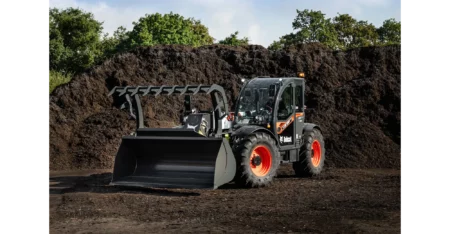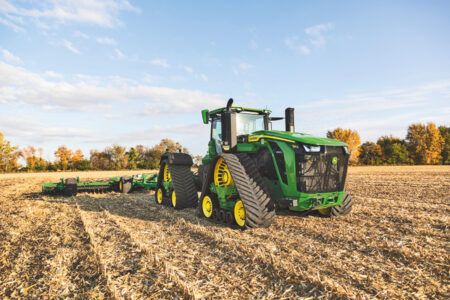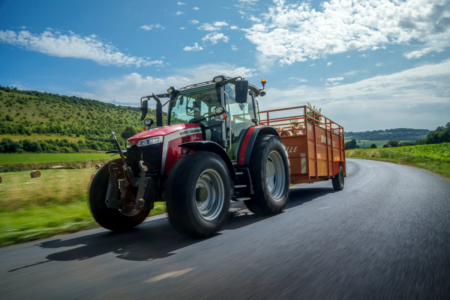Class has released its new Xerion 12 series. The two models come in above the Xerion 4200 – 5000 and feature the highly efficient low-engine speed drive concept 2.0, maximum power outputs of up to 653hp, the CEMOS operator assistance system, an enormous hydraulic pump capacity of up to 537 l/min and a new spacious cab with four-point suspension. In addition, the Terra Trac models are equipped with newly developed, damped crawler tracks from Claas Industrietechnik – making them stronger than ever.
The Xerion has been establishing new fields of application and expanding into new market regions for more than 25 years. The two new more powerful 12.590 and 12.650 models are designed as highly efficient specialists for the toughest of draught work, such as pulling wide cultivators and seed drills as well as chaser bins. In addition to North America, central Western Europe and South America, the core target markets include countries such as Australia.
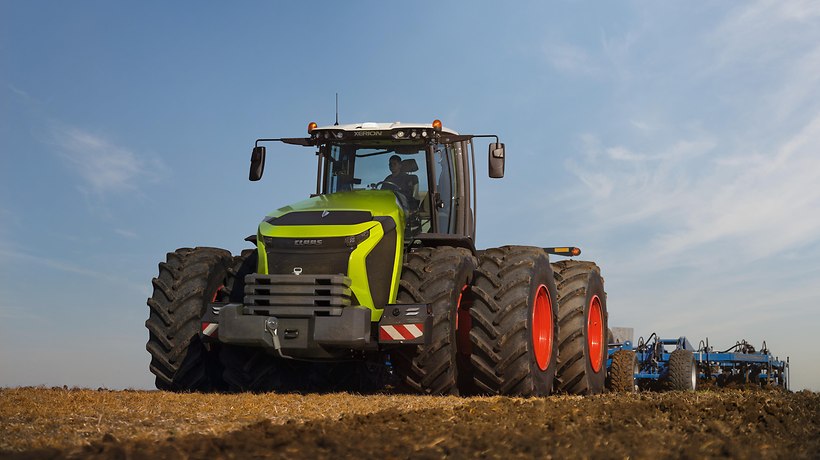
ABOVE: The two new Xerion series tractors feature the highly efficient low-engine speed drive concept 2.0
The successful basic concept with a bolted, highly resilient central frame and two steering axles was adopted from the Xerion 4200, 4500 and 5000 models and adapted to reflect the increased output, higher weight and larger track width. New Terra Trac triangular crawler track units or dual tyres up to 800/70 R42 transfer the power gently and efficiently to the ground, while the driver enjoys an excellent all-round view in the large, four-point-suspended cab.
The low-speed concept 2.0 marks a perfect synthesis between the efficient, high-cubic-capacity Mercedes-Benz engine and the optimally coordinated continuously variable transmission – capped by the high-performance, low-engine speed hydraulics featuring the highest hydraulic output on the market. With a maximum power output up to 653 hp and up to 3100 Nm of torque, the Xeron 12 Series is currently the most powerful four-wheel-drive tractor with continuously variable transmission technology on the market and features the familiar CEMOS operator assistance and process optimisation system from Claas standard tractors with CMATIC continuously variable transmission.
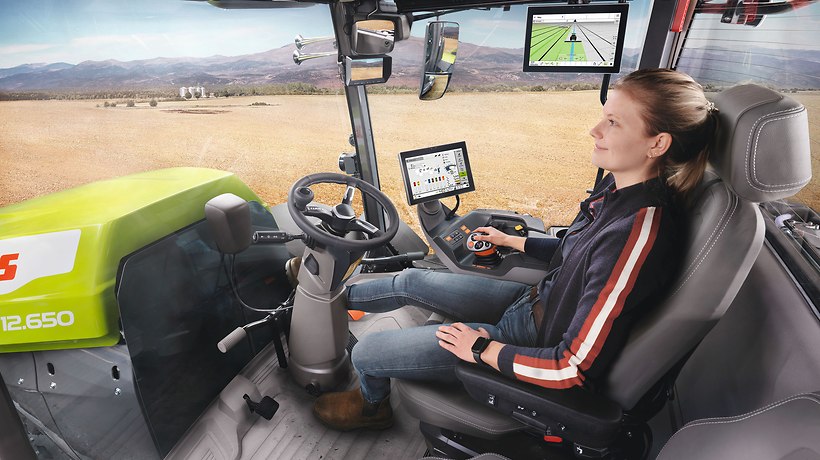
ABOVE: Like all Class tractors, the new Xerion 12 series is equipped with the latest generation CMATIC continuously variable transmission
When it came to engine technology, Mercedes-Benz was again the obvious choice. The 15.6 l OM473 LA six-cylinder in-line engine is familiar from the Jaguar and Lexion and combines enormous torque with fuel efficiency and low maintenance costs. In the XERION 12.590 this power unit delivers 585 hp from 1600 rpm and up to 653 hp in the Xerion 12.650. Turbo compound technology with wastegate turbocharger ensures enormous power development, even at low engine speeds, and maximum efficiency under full and partial load at the same time. As a result, the maximum torque – an impressive 3100 Nm in the Zerion 12.650 – is available even at 1300 rpm. The idling speed is set at a low 650 rpm.
The coolers for engine, transmission, hydraulics and axles are generously sized for maximum efficiency and positioned for easy access. The cooling area can be cleaned at the press of a button with the aid of the hydraulic reversible fan. The fuel tank in the XERION 12 Series has a capacity of 1400 l, while the AdBlue tanks can hold 90 l. The central position of the fuel tank means that the tractor’s weight distribution does not change during the working day as the fill level falls.
Like all Class tractors, the new XERION 12 Series is equipped with the latest generation CMATIC continuously variable transmission – maintenance-friendly, durable and perfectly matched to the engine’s optimal torque and consumption characteristics. Since 2003, the transmissions in the Xerion have proved themselves to be exceptionally robust, reliable and durable even in the toughest situations. In addition, the gentle starting and deceleration torque of the continuously variable, split-power drives protect cultivators and seed drills by avoiding peak loads on the frame structures and hitching devices caused by abrupt shifting or engaging and disengaging with the implement in working position.



